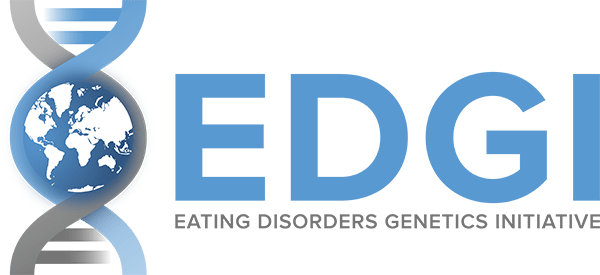About eating disorders
What are eating disorders?
An eating disorder is a complex mental illness that for some, can lead to severe and permanent physical complications, and even death.1 Eating disorders are not a choice, they are serious illnesses.2
People experiencing some eating disorders may hold an inaccurate perception of their body size and shape, and attempt to control their weight and appearance through excessive dieting, exercising, and/or purging.3
There are four main types of eating disorders – anorexia nervosa, bulimia nervosa, binge-eating disorder and other specified feeding or eating disorders (OSFED).2
- Anorexia nervosa is a serious and complex condition with psychiatric and physical symptoms.4, 5
- According to the Diagnostic and Statistical Manual of Mental Disorders, Fifth Edition (DSM-5) criteria, to be diagnosed with anorexia nervosa a person must display:4
- Persistent restriction of energy intake leading to significantly low body weight (within the context of the minimum expectations for their age, sex, developmental trajectory, and physical health).
- Either an intense fear of gaining weight, or of becoming fat, or persistent behaviour that interferes with weight gain (despite being significantly low in weight).
- Disturbed perceptions of one’s body weight or shape, undue influence of body shape and weight on self-evaluation, or persistent lack of recognition of the seriousness of the current low body weight.
- Factors contributing to the development of anorexia nervosa are complex and include a strong genetic component.6 Genes can be triggered by environmental influences, such as dieting or extreme exercise.7, 8
- Personality traits of perfectionism and fear of failure, low self-esteem, and emotion avoidance are common in those living with anorexia nervosa.9
- Anorexia nervosa is characterised by the severe restriction of food intake, and generally results in significant (and dangerous) weight loss.10
- People living with anorexia nervosa often adhere to intense exercise routines.11, 12
- While the prevalence of anorexia nervosa is low, it has the one of the highest mortality rates of any psychiatric disorder, due to medical complications and suicide.3
- Young people between the ages of 15 and 24 with anorexia nervosa have 10 times the age-adjusted mortality rate, compared to their same-aged peers, due to medical complications and suicide.3,13, 14
- Bulimia nervosa is characterised by recurrent binge-eating episodes (consumption of unusually large volumes of food in a relatively short space of time), followed by compensatory behaviours.15
- According to the DSM-5 criteria, to be diagnosed as having bulimia nervosa a person must display:4, 5
- Recurrent episodes of binge eating, characterised by eating in a discreet period of time and consuming larger volumes of food than what most people would consume during a similar period of time, and under similar circumstances;
- A sense of lack of control over eating (e.g. a feeling that one cannot stop eating or control what or how much they consume);
- Recurrent inappropriate behaviours to compensate for over consumption in order to prevent weight gain, such as self-induced vomiting, misuse of laxatives, diuretics, or other medications, fasting, or excessive exercise;
- The binge eating and inappropriate compensatory behaviours occurring at least once a week for three months; and
- Self-evaluation influenced by body shape and weight.
- Accompanied by a sense of loss of control, binges are often followed by feelings of guilt and shame. Binges are often counteracted by self-induced vomiting, fasting, over-exercising and/or misuse of laxatives, enemas, or diuretics.15
- Binge-eating disorder involves episodes of eating unusually large amounts of food, and a loss of control.4, 16
- Binge-eating episodes are associated with three (or more) of the following:4
- Eating much more rapidly than normal;
- Eating until feeling uncomfortably full;
- Eating large amounts of food when not feeling physically hungry;
- Eating alone because of being embarrassed by how much one is eating; and
- Feeling disgusted with oneself, depressed, or very guilty after overeating.
- Unlike bulimia nervosa, binge-eating disorder does not involve purging or other compensatory behaviours like excessive exercise. The illness can however, involve sporadic fasting and repetitive diets, as well as weight gain.17
Other common questions
People experiencing some eating disorders may hold an inaccurate perception of their body size and shape, and attempt to control their weight and appearance through excessive dieting, exercising, and/or purging.3
- Approximately one-in-20 Australians, and an estimated four to seven per cent of the Australian adult population are living with an eating disorder.18, 19
- The prevalence of eating disorders appears to be on the rise, with a two-fold increase in the prevalence of disordered eating behaviour observed in Australian communities over
10 years.20 - Approximately 85,000 Australian adults are currently living with anorexia nervosa.18
- Approximately 120,000 Australian adults are currently living with bulimia nervosa.18
- As the most common eating disorder, nearly three (2.8) per cent of Australian adults are expected to develop binge-eating disorder during their lifetime.17, 18
Eating disorders cause significant distress to the lives of an individual, their family, carers, partners and friends.21
Commonly co-occurring conditions associated with eating disorders include mood disorders (such as clinical depression), anxiety disorders (especially social anxiety disorder), obsessive-compulsive disorder (OCD), substance abuse disorders (such as alcohol problems), and personality disorders.3, 22 Medical complications of eating disorders include cognitive impairment, heart complications, growth retardation and osteoporosis.23
Young people with anorexia nervosa between the ages of 15 and 24 have 10 times the age-adjusted mortality rate, compared to their same-aged peers, due to medical complications and suicide.3,13, 14
Across eating disorders, psychotherapeutic interventions are the most effective and recommended first-line treatment.31
Multidisciplinary team treatment of eating disorders is the standard of care, with close coordination of medical, nutritional, and psychiatric treatments. Services range from intensive medical and psychiatric inpatient programs to residential, partial hospital, day treatment, and varying levels of outpatient care, which may entail general medical treatment, nutritional consultation and counselling, and individual, group, and family psychotherapy.31
Level of care should be determined according to a patient's overall physical status, including body mass index and medical stability, as well as psychological symptoms and social circumstances.
Hospital-level care is necessary in the context of serious medical complications or seriously impaired psychological function. It may also be necessary when there is a rapid or persistent decline in intake or weight, an inadequate response to lower levels of care, or when psychosocial or comorbidities interfere with effective outpatient management.31
There is not a standalone, distinct cause of eating disorders but rather a complex interplay among various risk factors that triggers its inception.32 Some of the factors that influence eating disorders include genetics, developmental challenges (including puberty), thinking styles (such as perfectionism), body dissatisfaction (body image has ranked among the top four concerns for young people over the past nine years33) and socio-cultural pressures.34
Twin and adoption studies highlight that genetics substantially contribute to the risk for developing eating disorders. There is a moderate-to-high heritability of anorexia nervosa, bulimia nervosa, and binge-eating disorder in females and males during adolescence and adulthood.32
Data suggests that psychological and environmental factors interact with and influence the expression of genetic risk to cause eating disorders.32
Sociocultural influences (i.e. media exposure, perceived pressures for thinness, thin-ideal internalisation, thinness expectancies) are risk factors for eating disorders, but not universally – only a subset of females and males are vulnerable to these influences.32
Personality traits have received significant attention as a contributing cause of eating disorders. Negative emotionality/neuroticism, perfectionism, and impulsivity/negative urgency personality traits have all been shown to share a causative link to eating disorders.32
- National Eating Disorders Collaboration. What is an eating disorder? . [cited October 2019]; Available from: https://www.nedc.com.au/eating-disorders/eating-disorders-explained/something/whats-an-eating-disorder/.
- Walker, S. and C. Lloyd, Barriers and attitudes health professionals working in eating disorders experience. International Journal of Therapy and Rehabilitation, 2011. 18(7): p. 383-390.
- Ministry of Health. Future Directions for Eating Disorders Services in New Zealand. 2008 [cited Dec, 2019]; Available from: https://www.health.govt.nz/system/files/documents/publications/future-directions-eating-disorders-services-nz-v2.pdf.
- American Psychiatric Association, Diagnostic and Statistical Manual of Mental Disorders: Diagnostic and Statistical Manual of Mental Disorders. Fifth Edition ed. 2013.
- Eating Disorders Victoria. About the DSM-5. [cited Jan, 2020]; Available from: https://www.eatingdisorders.org.au/eating-disorders/what-is-an-eating-disorder/classifying-eating-disorders/dsm-5.
- Watson, H.J., et al., Genome-wide association study identifies eight risk loci and implicates metabo-psychiatric origins for anorexia nervosa. Nature Genetics, 2019. 51(8): p. 1207-1214.
- Dittmer, N., C. Jacobi, and U. Voderholzer, Compulsive exercise in eating disorders: proposal for a definition and a clinical assessment. Journal of Eating Disorders, 2018. 6(1): p. 42.
- Himmerich, H., et al., Genetic risk factors for eating disorders: an update and insights into pathophysiology. Therapeutic Advances in Psychopharmacology, 2019. 9: p. 2045125318814734.
- Bulik, C., et al., The Relation Between Eating Disorders and Components of Perfectionism. The American journal of psychiatry, 2003. 160: p. 366-8.
- National Eating Disorders Collaboration. Anorexia nervosa. [cited December 2019]; Available from: https://www.nedc.com.au/eating-disorders/eating-disorders-explained/types/anorexia-nervosa/.
- Klump, K.L., et al., Academy for eating disorders position paper: eating disorders are serious mental illnesses. Int J Eat Disord, 2009. 42(2): p. 97-103.
- Kolnes, L.-J., 'Feelings stronger than reason': conflicting experiences of exercise in women with anorexia nervosa. Journal of eating disorders, 2016. 4: p. 6-6.
- Smink, F.R.E., D. van Hoeken, and H.W. Hoek, Epidemiology of eating disorders: incidence, prevalence and mortality rates. Current psychiatry reports, 2012. 14(4): p. 406-414.
- Fichter, M. and N. Quadflieg, Mortality in eating disorders - Results of a large prospective clinical longitudinal study. The International journal of eating disorders, 2016. 49.
- Fairburn, C.G. and P.J. Harrison, Eating disorders. Lancet, 2003. 361(9355): p. 407-16.
- National Eating Disorders Collaboration. Binge eating disorder. [cited December 2019]; Available from: https://www.nedc.com.au/eating-disorders/eating-disorders-explained/types/binge-eating-disorder/.
- Kessler, R.C., et al., The prevalence and correlates of binge eating disorder in the World Health Organization World Mental Health Surveys. Biol Psychiatry, 2013. 73(9): p. 904-14.
- Hay, P., F. Girosi, and J. Mond, Prevalence and sociodemographic correlates of DSM-5 eating disorders in the Australian population. J Eat Disord, 2015. 3: p. 19.
- Smink, F.R., D. van Hoeken, and H.W. Hoek, Epidemiology of eating disorders: incidence, prevalence and mortality rates. Curr Psychiatry Rep, 2012. 14(4): p. 406-14.
- Hay, P.J., et al., Eating disorder behaviors are increasing: findings from two sequential community surveys in South Australia. PloS one, 2008. 3(2): p. e1541-e1541.
- NSW GOVERNMENT Health. NSW Service Plan for People with Eating Disorders 2013-2018. [cited DEC, 2019]; Available from: https://www.health.nsw.gov.au/mentalhealth/resources/Publications/service-plan-eating-disorders-2013-2018.pdf.
- Jordan, J., et al., Specific and nonspecific comorbidity in anorexia nervosa. International Journal of Eating Disorders, 2008. 41(1): p. 47-56.
- Royal Australian and New Zealand College of Psychiatrists. Clinical practice guidelines for treatment of eating disorders. 2014 [cited October 2019]; Available from: https://www.ranzcp.org/files/resources/college_statements/clinician/cpg/eating-disorders-cpg.aspx.
- Delinsky, S.S., J.L. Derenne, and A.E. Becker, Specific Mental Health Disorders: Eating Disorders. 2016. p. 43-47.
- Culbert, K.M., S.E. Racine, and K.L. Klump, Research Review: What we have learned about the causes of eating disorders – a synthesis of sociocultural, psychological, and biological research. 2015. 56(11): p. 1141-1164.
- Mission Australia. Youth Survey Report 2019. 2019; Available from: https://www.missionaustralia.com.au/what-we-do/research-impact-policy-advocacy/youth-survey.
- Treasure, J., et al., The experience of caregiving for severe mental illness: a comparison between anorexia nervosa and psychosis. Soc Psychiatry Psychiatr Epidemiol, 2001. 36(7): p. 343-7.

